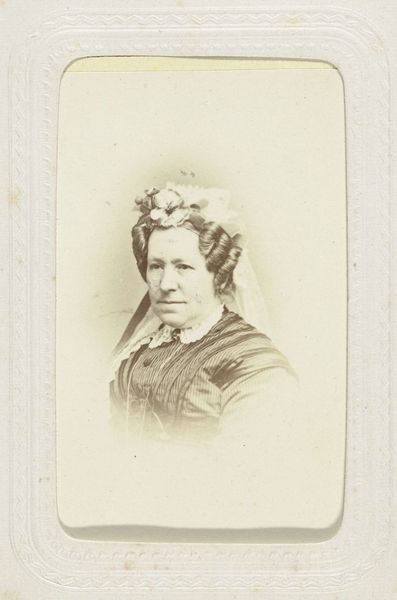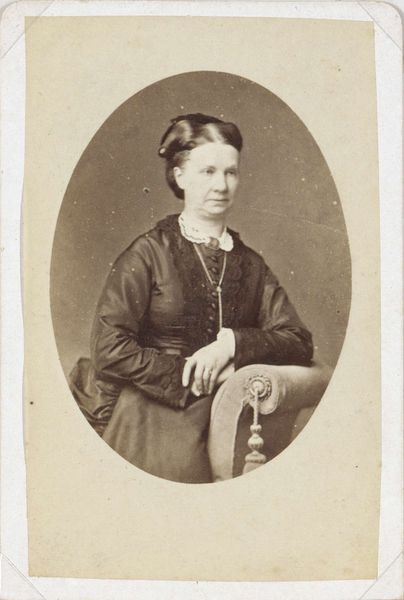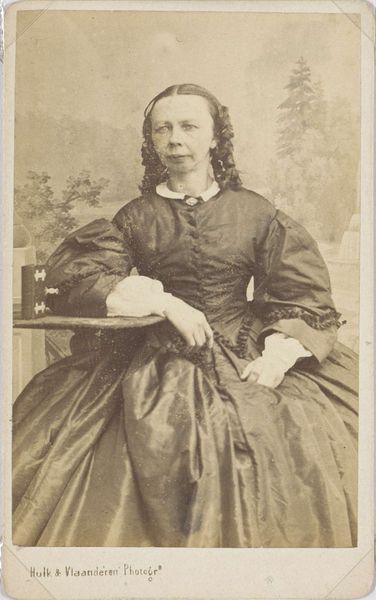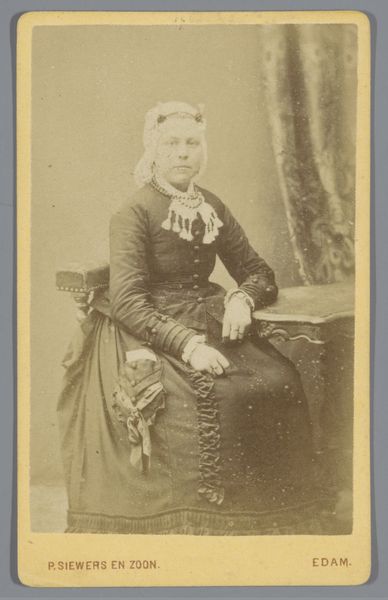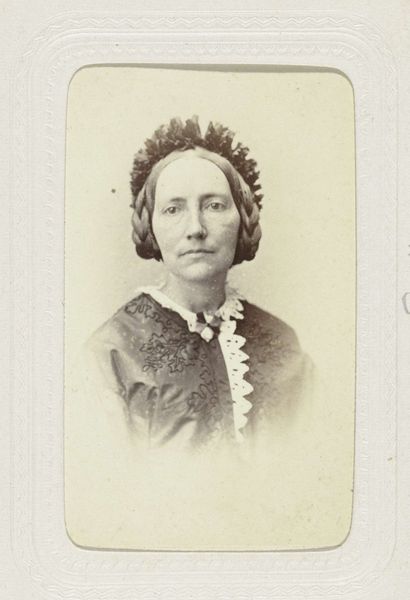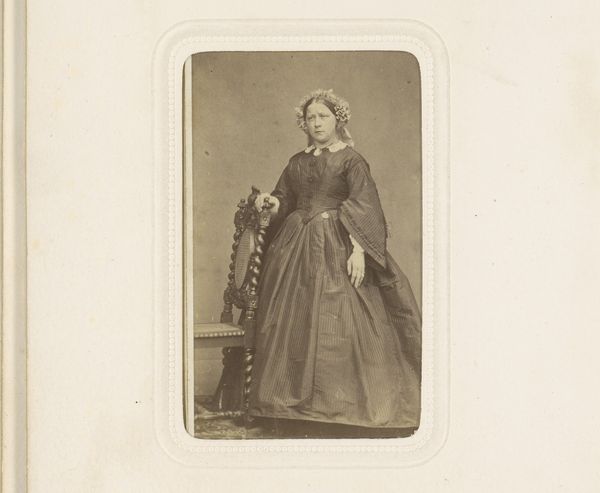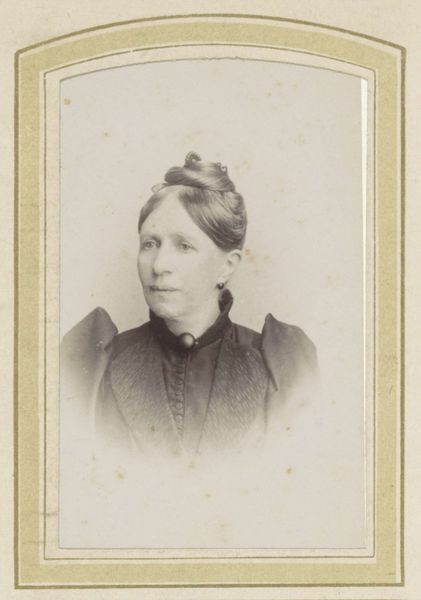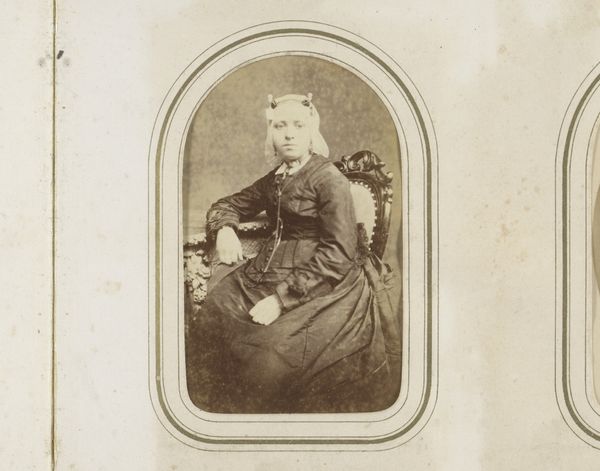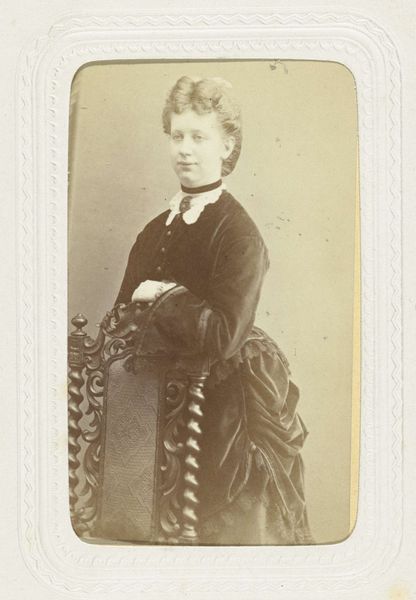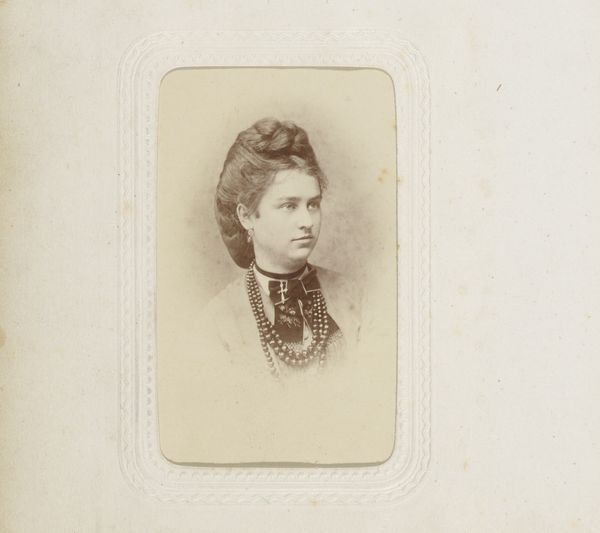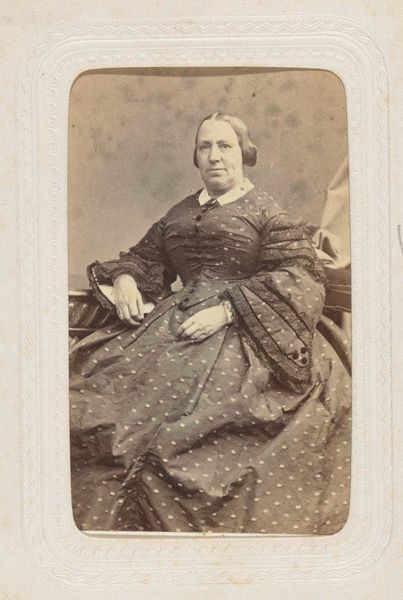
Studioportret van een vrouw met vlechten en een om het hoofd gebonden doek c. 1863 - 1866
0:00
0:00
Dimensions: height 80 mm, width 54 mm, height 296 mm, width 225 mm
Copyright: Rijks Museum: Open Domain
Editor: Here we have a photographic portrait from around 1863-1866, created by Wegner & Mottu. It’s titled “Studioportret van een vrouw met vlechten en een om het hoofd gebonden doek,” showing a woman in, well, a headscarf and braids. There's a quiet dignity to her, almost stoic. What strikes you when you look at this? Curator: The material conditions surrounding the production of this image immediately jump out. Photography at this time was not a simple snapshot. Think of the chemistry involved, the specific formulas for the emulsion, the glass plates. Consider also the labor involved – from the photographers Wegner and Mottu setting up the studio and processing the image to the woman who surely spent time preparing her clothes and hair. Editor: So, you're focusing on what it took to *make* the image, more than, say, the artistic intent? Curator: Precisely! And even that seemingly simple cloth bound around her head - where did it come from? Who wove the fabric, who dyed it? What social class does this simple material signal? Early photography democratized portraiture to some extent, making images accessible beyond the wealthy elite, yet this woman has the means to access the labor of creating the image itself, she also uses the objects of material culture - her clothing and headwear - to express herself in ways available because of industrializing textile manufacture and other consumer goods. Editor: I hadn't thought about it that way. I was just seeing a stern-looking woman. But it’s like the photograph itself is a product of so much labor and material culture. Curator: Indeed. This is a glimpse into a moment made possible by industrial advances. Now, look again, how does considering the context of production alter your understanding of that stern gaze? Editor: It feels…less about her individual personality, and more like she's part of this whole complex system, somehow. Food for thought!
Comments
No comments
Be the first to comment and join the conversation on the ultimate creative platform.
